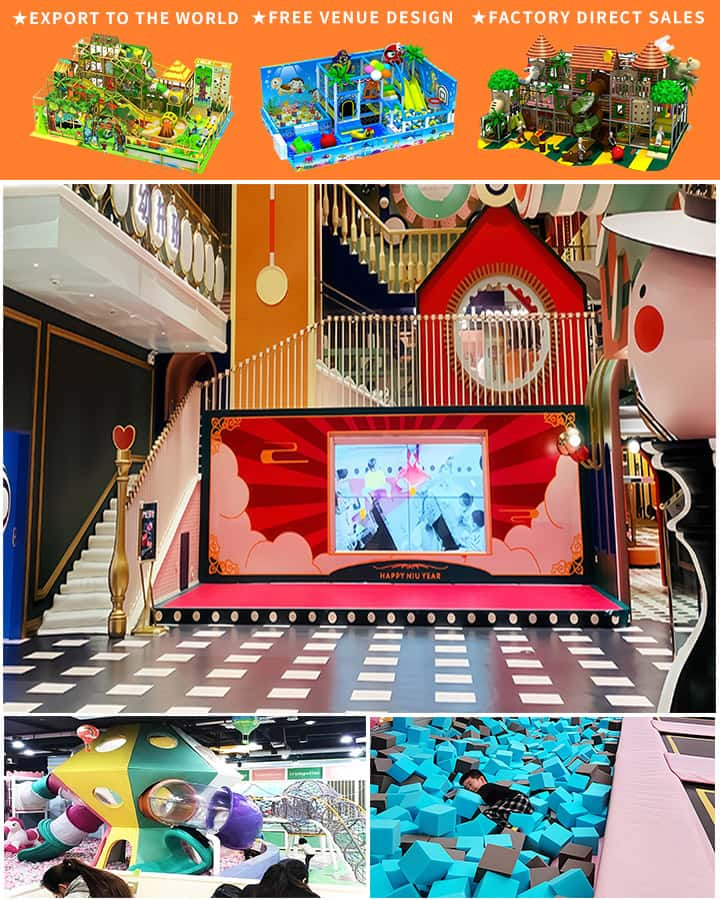Creating an indoor playground for your children can be a delightful way to keep them entertained, especially during long days or unfavorable weather. However, limited space can often pose a challenge. With a bit of creativity and strategic planning, you can transform even the smallest areas into fun, engaging play zones. Here are some ingenious ideas to help you maximize fun in small spaces.
1. Multi-Functional Furniture One of the best ways to save space is by investing in multi-functional furniture. For instance, consider getting a sofa bed that doubles as seating and sleeping space. Fold-out play tables can provide a surface for arts and crafts while also offering additional storage. Wall-mounted desks can free up floor space and still offer a dedicated area for study or playtime activities.
2. Vertical Play Areas When horizontal space is limited, think vertically! Utilize wall space by installing shelves and hooks for toys, books, and craft supplies. A vertical climbing wall or a series of hanging bars can provide physical activity options without taking up precious square footage. Consider building a pegboard wall where kids can hang their artwork, hats, bags, and other personal items, making it both functional and decorative.
 3. Under-Bed Adventures
The space under the bed is often overlooked but can be transformed into an exciting play area. You can install drawers or bins to store toys and create an instant treasure chest for kids to explore. Alternatively, use this space for a mini fort with blankets and pillows, encouraging imaginative play right at bedtime.
3. Under-Bed Adventures
The space under the bed is often overlooked but can be transformed into an exciting play area. You can install drawers or bins to store toys and create an instant treasure chest for kids to explore. Alternatively, use this space for a mini fort with blankets and pillows, encouraging imaginative play right at bedtime.
4. Compact Toy Storage Keeping toys organized is crucial in small spaces to prevent clutter. Use stackable bins or cubbies that can fit neatly on shelves or in corners. Transparent bins allow children to see their toys, making it easier for them to find and put away their belongings. Rotating toys every few weeks can also keep the play area fresh and exciting without overwhelming the space.
5. Foldable and Portable Play Equipment Foldable play structures such as compact slides, tunnels, and tents can be easily stored when not in use, making them ideal for small spaces. Portable ball pits or inflatable play areas can be set up in living rooms or spare bedrooms and deflated and stored away when necessary. These versatile options ensure that playtime doesn’t monopolize your entire home.
6. Creative Corners and Nooks Even a small corner of a room can become a magical spot for kids. Set up a cozy reading nook with a small bean bag chair and a bookshelf stocked with their favorite stories. Another idea is a pretend kitchen corner with a play stove, utensils, and a few containers—perfect for aspiring little chefs.
7. Interactive Wall Decorations Transform plain walls into interactive play areas with chalkboard paint, magnetic boards, or wall decals. Children can draw, write, and play games directly on these surfaces, adding an element of fun and learning to any room. Interactive maps or educational posters can also spark curiosity and creativity.
8. DIY Play Zones Get the whole family involved in creating DIY play zones tailored to your child’s interests and your available space. From homemade obstacle courses to sensory walls made of different textured materials, the possibilities are endless. DIY projects not only save money but also add a personalized touch to the play area.
In conclusion, designing an indoor playground for small spaces requires thoughtful planning and clever use of available resources. By incorporating multi-functional furniture, utilizing vertical space, and opting for foldable or portable play equipment, you can create a fun and inviting environment for your children. Remember, the key is to maximize every inch of space and make it as enjoyable and stimulating as possible for your little ones.




